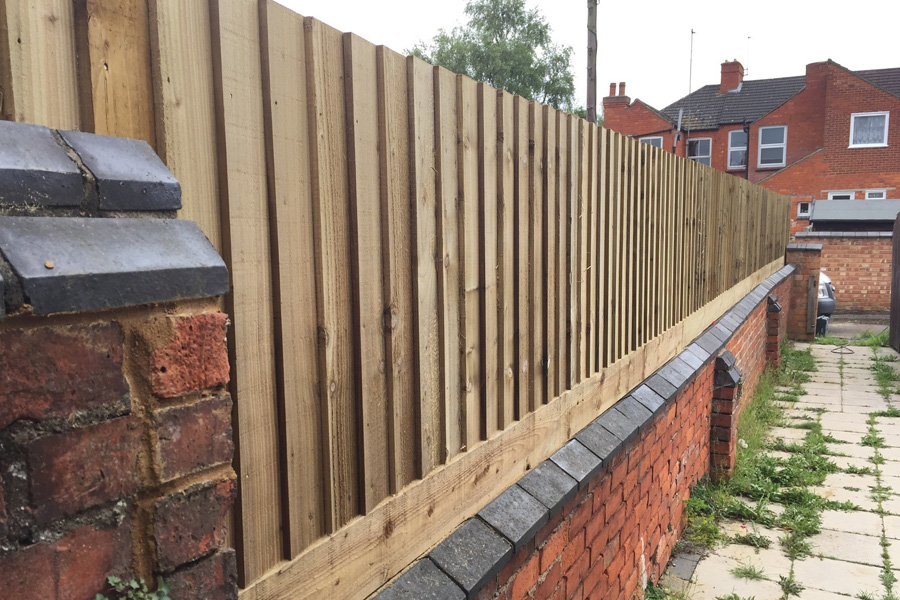A Comprehensive Guide to Security Fencing Regulations in the UK

Image Source: www.md-fencingdecking.co.uk
Security fencing is an essential component for many properties, providing protection and peace of mind for both residential and commercial premises. However, installing the right type of fencing isn’t just about aesthetics and effectiveness—it’s also about compliance. The UK has specific regulations governing fencing, especially when it comes to security fences. In this guide, we will explore the various rules and guidelines to ensure your fencing is compliant and fit for purpose, while also touching on best practices within the industry.
Whether you’re considering a new installation or looking to upgrade your existing fencing in Leeds, understanding these regulations is key to avoiding penalties and ensuring safety. We’ll discuss key regulations, common mistakes to avoid, and how your choice of fencing impacts security, particularly for commercial properties.
1. Planning Permission and Legal Considerations
Before erecting any fence, it’s important to check whether you require planning permission. In the UK, the rules for planning permission for fences are quite clear but can vary slightly depending on local authorities. Generally, a fence that is:
- Under 2 metres high does not typically require planning permission, unless it borders a public highway where the limit drops to 1 metre.
- If you are planning to install a fence taller than 2 metres, or if you are near a conservation area or a listed building, it’s crucial to consult with your local planning authority. In Leeds, for example, the city council may have specific restrictions in certain zones, and it’s always best to confirm these beforehand.
Failure to obtain the necessary permission could lead to forced removal or alterations to your fencing, which can be costly and time-consuming. For those looking at commercial properties, the rules tend to be stricter, and it’s important to align your needs with the guidelines of both fencing Leeds authorities and national standards.
2. UK Fencing Standards: BS 1722
Security fencing in the UK is subject to the British Standard BS 1722, which covers the specifications for different types of fencing. BS 1722 is divided into multiple parts, each addressing different types of fencing such as chain-link, mesh, palisade, and steel panel fencing. Understanding these standards is crucial for anyone involved in the construction or procurement of security fencing, as it ensures your installation meets safety, durability, and design requirements.
Key parts of BS 1722 include:
- BS 1722-12: Covers the installation of steel palisade fencing, commonly used for high-security environments.
- BS 1722-18: Relates to high-security fences like those made of welded mesh.
- BS 1722-10: Concerns anti-climb mesh fencing, which is ideal for sites requiring enhanced protection.
When looking at Leeds fencing, ensure your supplier adheres to these standards, as they not only guarantee compliance but also quality and longevity of the installation.
3. Types of Security Fencing
The type of security fencing you choose depends largely on the level of protection you need. Below are some common types, each serving different purposes:
Palisade Fencing:
This is perhaps the most well-known security fencing option in the UK, often seen around industrial estates, schools, and utility sites. Palisade fences are robust, weather-resistant, and difficult to climb due to their pointed tops. They are usually made of steel and can be powder-coated in different colours to match the surrounding environment.
Mesh Fencing:
Mesh fencing is a versatile option that can be used for various security needs. It’s particularly favoured for sports facilities, schools, and commercial premises. Mesh fences are strong, durable, and provide a good level of visibility, making them an excellent option where surveillance is important.
Acoustic Fencing:
A growing number of properties in Leeds and other urban areas are adopting acoustic fencing to both protect and reduce noise pollution. While not traditionally seen as a security measure, the increased use of acoustic barriers adds an additional layer of privacy and protection.
Each of these options may be subject to specific height, material, and installation regulations under local planning laws. Ensuring you comply with fencing Leeds standards not only protects you from fines but guarantees that your installation meets safety and security needs.
4. Security Fencing for Commercial Properties
Commercial properties often require higher levels of security, and this typically means more stringent regulations. In high-risk environments, anti-climb fencing is essential, and your choice of fence may need to incorporate other security measures, such as barbed wire or electrical components.
The Highways Act 1980 also comes into play if your commercial fencing is near a public road. Fences that may obstruct visibility for road users could face restrictions, and the addition of certain features, like spikes or electric current, must be carefully regulated to ensure compliance with both local laws and the Health and Safety at Work Act.
Additionally, businesses must factor in public liability. If your fence causes injury to a member of the public, the liability could rest with the property owner. Therefore, it is essential to ensure that all fencing is not only compliant with Leeds fencing regulations but is also installed professionally and safely.
5. Maintenance and Safety Compliance
Once installed, security fencing requires regular maintenance to remain compliant. Neglecting your fencing can lead to structural failures, making your property vulnerable and potentially leading to legal issues. Periodic checks should be conducted to ensure that the fence remains robust, secure, and free from damage or wear.
If your property is a workplace, under the Health and Safety at Work Act 1974, the employer is responsible for ensuring that all aspects of the workplace, including perimeter security, are safe and secure. This could mean regular inspections of the fencing to ensure no breach points or weak spots develop over time.
Commercial properties should also consider additional safety measures, such as warning signs, particularly if the fence is designed to deter trespassing through harmful means (e.g., barbed wire or electric fences).
6. Enhancing Security with Technology
In addition to the physical security provided by fences, many businesses and high-risk residential properties are incorporating advanced security technologies into their fencing systems. This might include motion sensors, CCTV integration, and alarm systems that are directly connected to the fence.
These systems are becoming increasingly common in Leeds fencing installations, where smart technology offers an additional layer of protection. Combining physical and digital security ensures maximum protection against intruders, providing both a visible and active deterrent.
In conclusion, security fencing is about much more than just keeping people out. It’s about compliance, safety, and choosing the right materials and design for your specific needs. Understanding UK regulations and standards, particularly in fencing Leeds, ensures that your installation will be not only effective but also legal.
By adhering to planning permission requirements, following the BS 1722 standards, and maintaining your fence over time, you can rest assured that your property remains protected. Whether you are looking to secure a commercial site or a residential property, working with knowledgeable professionals who understand local regulations is key to success.
For those in Leeds and the surrounding areas, working with experts in Leeds fencing will provide the peace of mind that your fence is both compliant and secure, protecting your property for years to come.







